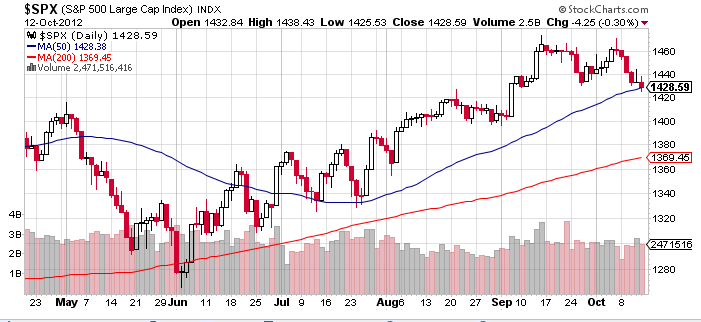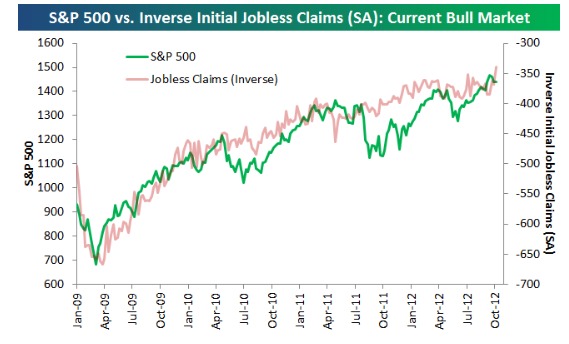U.S. stocks just suffered their worst weekly drop in four months, although there are several indicators and factors that continue to make the case for long-term investments — and perhaps even for buying market dips.
There were three big negative headlines towards the end of this week:
1) Investors pulled $10.6 billion out of stock funds in the week ended Oct. 3, according to the Investment Company Institute. That marks the biggest weekly outflow of the year and the largest since August 2011. It’s a reflection of rising fear, possibly ahead of the presidential election and the looming “fiscal cliff”.
2) Bearish market sentiment rose to 38.8%, as of the weekly period ending Oct. 10, according to the latest AAII survey. The level of bearish sentiment has stayed above the historical average of 30% for a seventh-straight week. Meanwhile, bullish sentiment reached a low last seen in early August.

Source: Stockcharts.com
3) Both the Nasdaq 100 (NDX) and the Technology Select Sector SPDR — the (XLK) — crashed below their respective 50-day moving averages early this week, as tech stocks showed weakness. Now, as seen above, the S&P 500 (SPX) slipped below its 50-day average for the first time since June.
Yet here are three positives for the market — and reasons to think that equity investments for the long haul continue to make sense:

Source: Stockcharts.com
1) Jobless claims are coming down. The chart above just may just be one of the most important out there. It’s the inverse of seasonally adjusted initial jobless claims plotted against the S&P 500. The inverse of initial claims tends to lead the market at key turning points. What is encouraging is that the initial claims line just broke to the upside — one suggestion that perhaps the stock market can eventually do the same.
2) We’re in a seasonally strong period for stocks. According to research by Ben Jacobsen and Cherry Yi Zhang, the average difference between November-April and May-October returns is 6.25% over the past 50 years. Based on that history, at least, it’s more likely a time to buy, not sell.
3) Even one of the biggest bears on the economy — David Rosenberg — made a case this week for owning dividend-paying stocks. He noted that S&P 500 dividend yields near 2% are still far above a 5-year T-note yield that remains below 0.7%. Stocks are simply offering the superior payout to bonds, which may drive more investors to seek dividend-paying stocks as a yield alternative.


